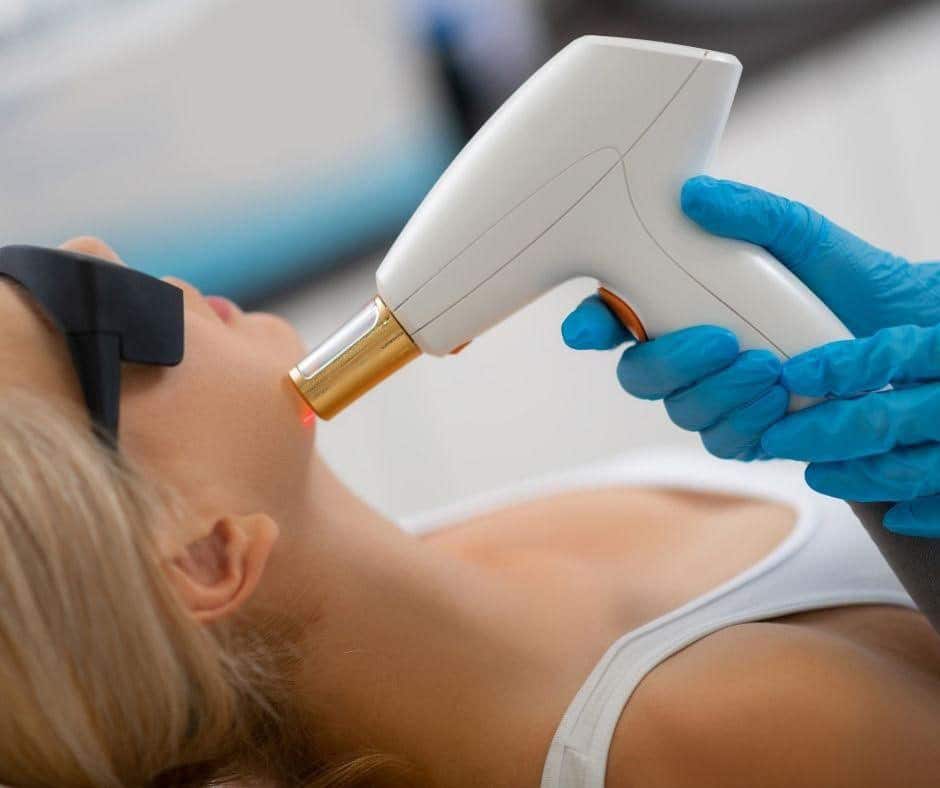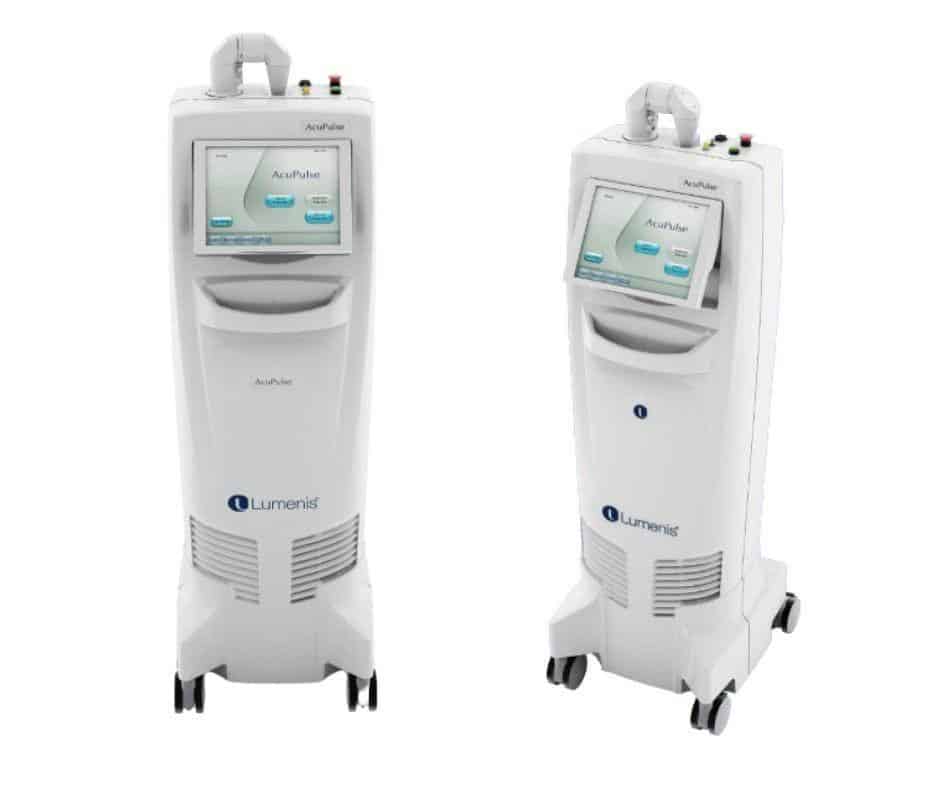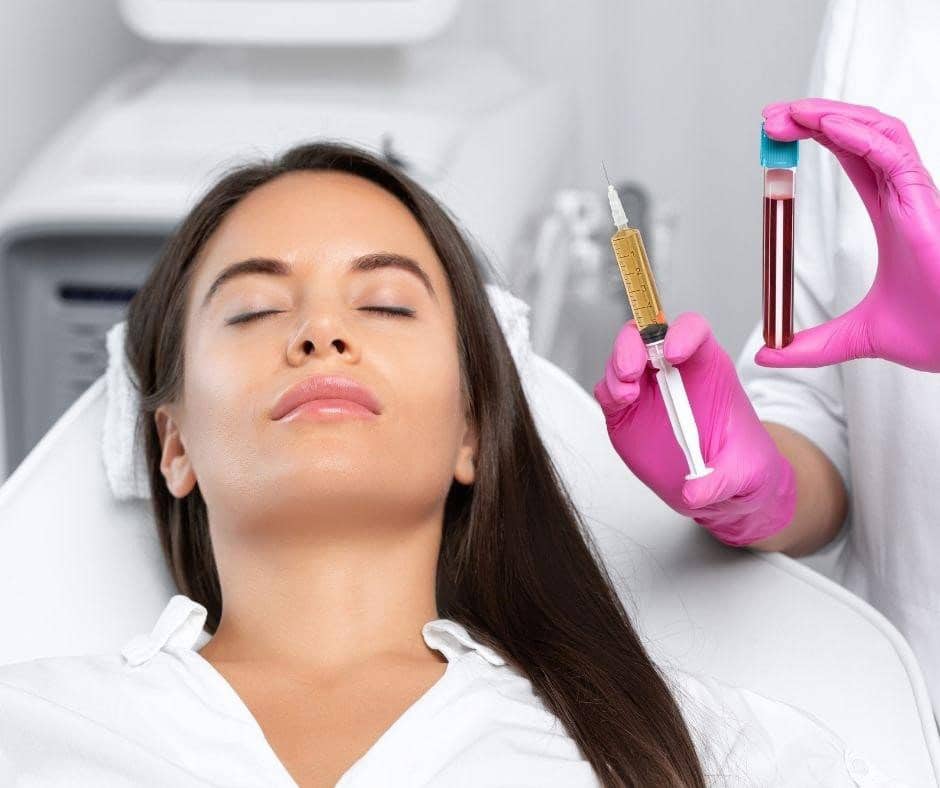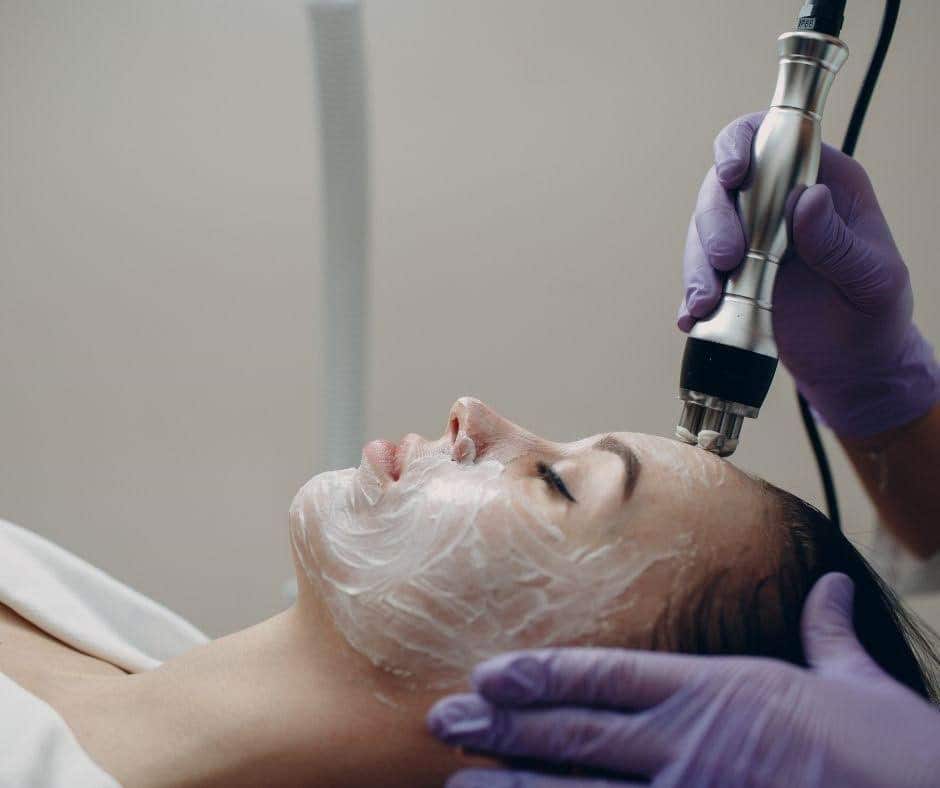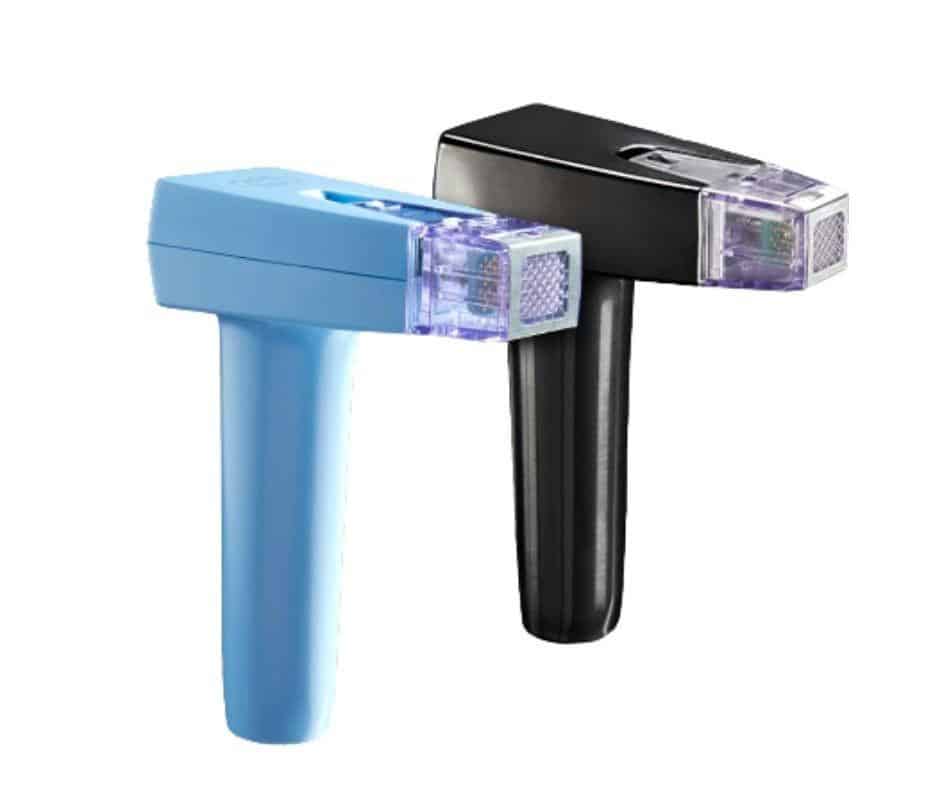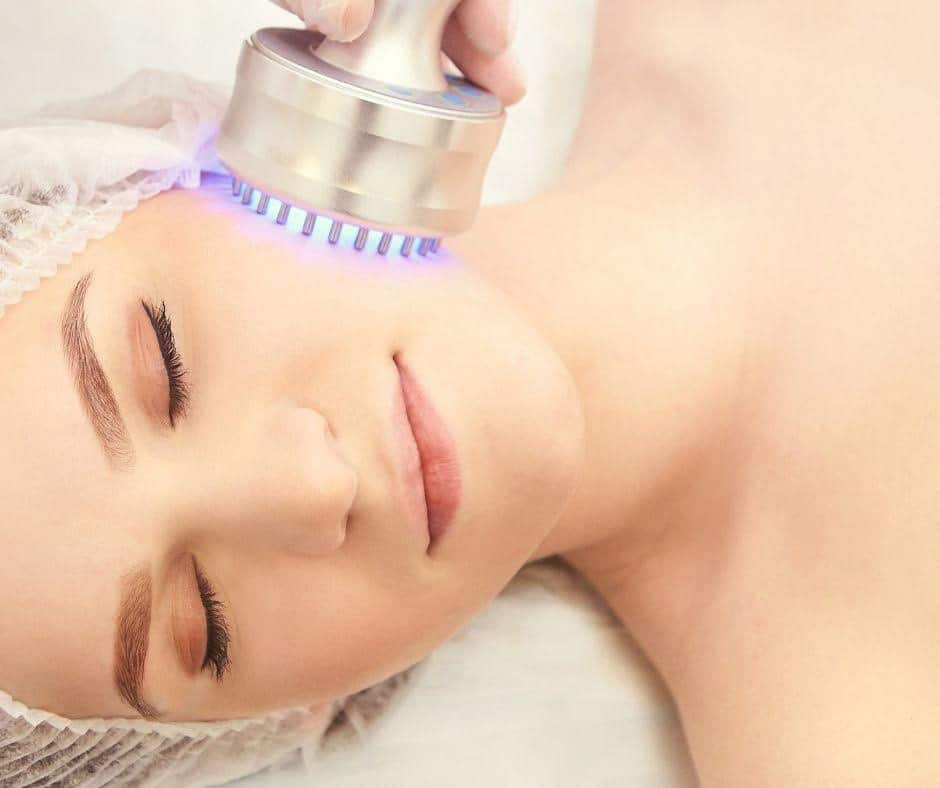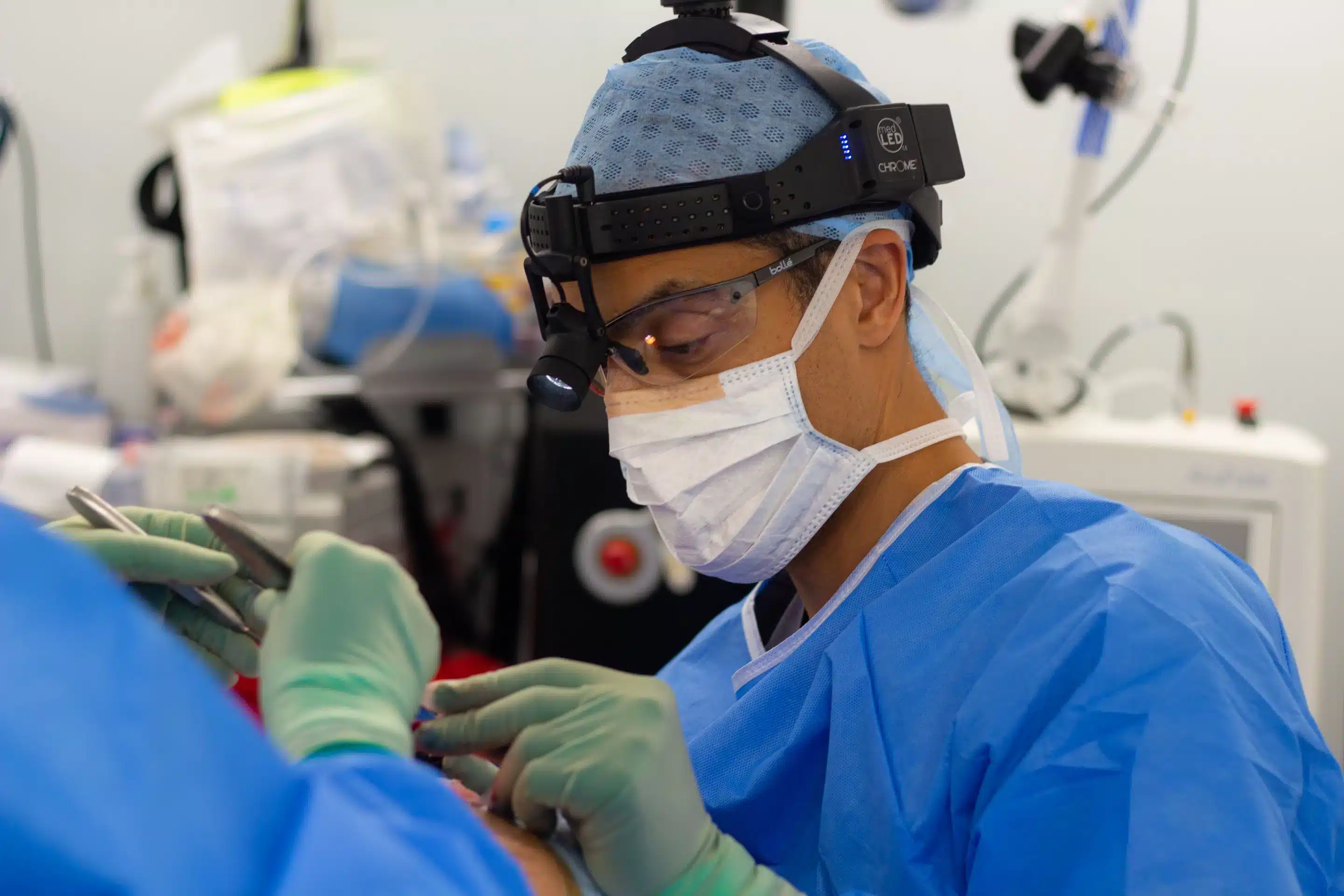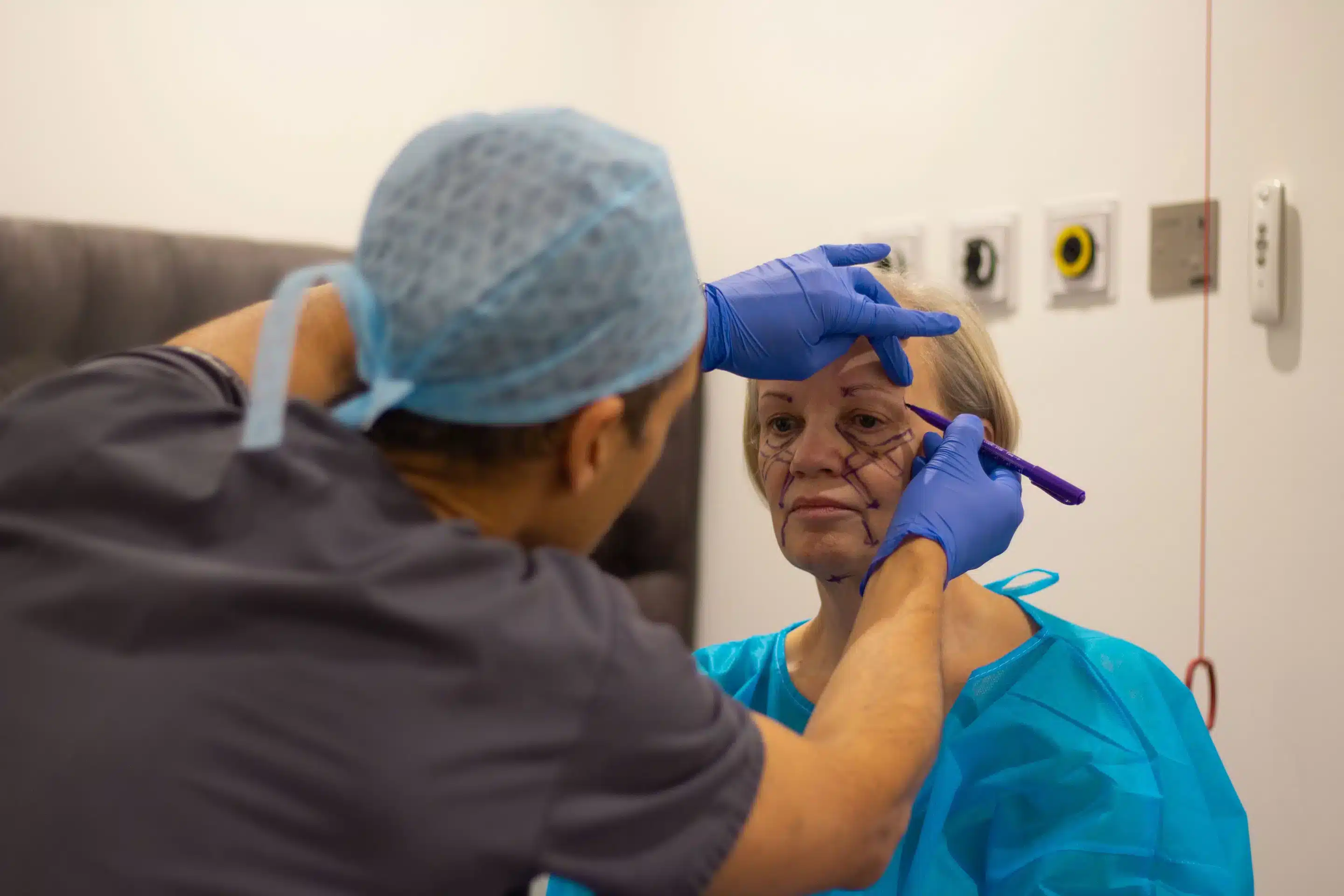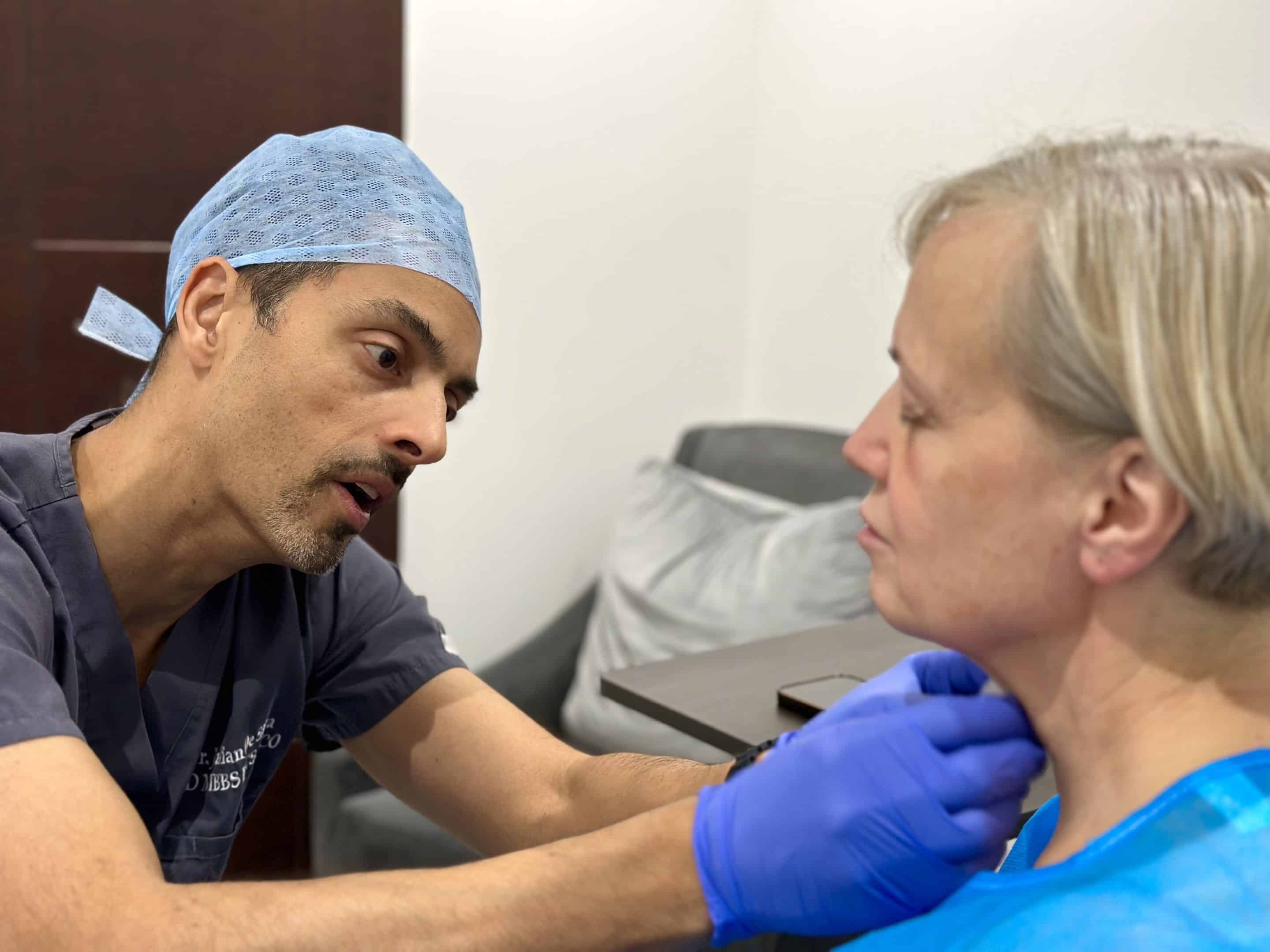Laser resurfacing plays a huge role in improving skin quality (fine lines, large pores).
Laser resurfacing is a treatment that can get rid of many skin issues such as fine lines, large pores, and wrinkles. When done by a reputable plastic surgeon, the treatment can enhance your skin.
But what role does signature laser resurfacing play in improving skin quality (fine lines, large pores)? What should you do before the treatment? How about recovery?
In this article, we will talk about laser resurfacing, how it can help you, and the treatments usually combined with it. We will also talk about recovery and what you must do before the treatment.
Laser Resurfacing
Laser resurfacing did wonders for my patients.
Laser resurfacing has worked miracles for my patients and patients all over the world. For this very reason, I, Dr. de Silva, have invested in the latest technology and purchased state-of-the-art laser equipment in 2022.
Lasers come in two primary forms: ablative and non-ablative. Ablative lasers penetrate deep into the skin, focusing on the underlying layers whilst shedding the topmost one. This action spurs the generation of collagen, the protein responsible for the skin’s elasticity and youthful glow. As the skin’s outer layer recovers, it reveals a smoother, tauter surface. The carbon dioxide (CO2) laser and the erbium laser are the typical choices in this group.
Conversely, non-ablative lasers are gentler and boast a quicker recovery period, making them ideal for those on the go. However, they might not offer results as dramatic as their ablative counterparts. Some examples include the pulsed-dye laser, erbium, and intense pulsed light (IPL).
A more recent entrant in the field is the fractional laser, which merges attributes of both the previous types. It treats the skin in tiny segments, sparing some areas in between. This method reduces recovery duration and minimises potential risks.
Laser resurfacing isn’t just about wrinkle control. It harmonises the skin tone, addresses sagging skin, softens fine lines, and shrinks enlarged pores. To put it simply, laser treatments significantly uplift skin health and aesthetics.
Such benefits redefine your facial contours, tightening the skin for a vibrant, youthful appearance.
Lumenis Acupulse
Lumenis Acupulse plays a big role in improving skin quality (fine lines, large pores).
Lumenis Acupulse is different from other CO2 lasers in the market. It is the gold standard as it is more powerful. The treatment also offers patients better results with combined superficial and deep resurfacing.
A fractionated CO2 laser, the Lumenis AcuPulse Laser targets water in the skin to create a light-controlled superficial burn. This results in a healing reaction that tightens and smoothes the skin. Instead of treating the full surface area of the skin, fractionated lasers lay down a pattern of dots to allow the skin to heal more quickly.
Wrinkles, sun damage, pigmentary changes, and even pore size reduction can all be treated with Lumenis and other fractionated CO2 lasers. The laser tightens and smoothes the skin by causing a controlled burn. This triggers a healing reaction that leads to an increase in collagen, elastin, hyaluronic acid, and other chemicals within the skin.
In the field of facial resurfacing, fractionated CO2 lasers are widely regarded as the gold standard (wrinkle and sun damage reduction). The majority of patients will be able to resume public activities within five days, but some will need to wait longer. The face will be mostly healed after five days, but it will be red. The redness usually lasts three to six weeks. However, it can last longer in certain patients.
PRP (Platelet-Rich Plasma) and Laser Resurfacing
PRP (platelet-rich plasma) when combine with laser resurfacing can improve your skin qualit, including fine lines, wrinkles, and large pores.
I, Dr. De Silva, also combine PRP(platelet-rich plasma), a type of regenerative treatment, with laser resurfacing so your bodyu can heal more quickly after any cosmetic procedure, especially surgical ones.
Platelet-rich plasma is made up of two components: your platelets and plasma. Your plasma is the liquid part of your blood, while your platelets are the kind of blood cell that helps your wounds heal.
Platelets have the best clotting features and contain growth factors that promote tissue regeneration and repair the affected area after a cosmetic procedure.
To make platelet-rich plasma, my colleagues and I take a blood sample from the patient. We then place it in a centrifuge. The centrifuge spins the sample very rapidly, which results the platelets to be separated from other blood components. This process then produces platelets that are highly concentrated inside your plasma.
The solution is then injected into the target location, such as an injured knee or a tendon after the platelet-rich plasma is created from a patient’s blood sample. In some cases, we may advise using ultrasound to guide the injection properly. By doing this, we speed up the healing process by increasing the growth factors in the target areas.
Radiofrequency
Radiofrequency is a key factor in improving skin quality (fine lines, large pores).
I, Dr. De Silva, also perform laser resurfacing in combination with radiofrequency that tightens skin between two to four mm for the best effects.
Collagen and elastin, two components found in your skin, degrade with time, causing your skin to lose its flexibility.
Heat is utilized to induce the synthesis of new collagen and elastin during a radiofrequency skin tightening procedure. The increased synthesis of these components aids in the reduction of wrinkles and fine lines, as well as skin tightening.
The tissue beneath your skin’s outer layer or epidermis is targeted with radiofrequency energy during radiofrequency (RF) skin tightening. This energy produces heat, which leads to the creation of new collagen.
Heat is used in RF treatments to harm the tissue beneath the epidermis without affecting the skin’s appearance.
Patients may report instant skin tightening following treatment. Other people may have improvements within months of starting the treatment. Results often last two to three years with good skincare.
Here are radiofrequency treatments that my clinic at Harley Street, London offers:
Morpheus8
Morpheus8 plays a significant role in enhancing skin quality, addressing issues like fine lines and enlarged pores.
It’s not just any micro-needling device; Morpheus8 is our latest all-over, non-invasive tool for combatting signs of ageing. Specifically, it harnesses the power of radiofrequency for profound skin tightening.
This groundbreaking micro-needling technique, being the only one of its kind to work on the entire body, delivers remarkable results.
While Morpheus8 shares similarities with typical micro-needling devices, it goes a step further. Apart from making tiny pricks, it utilises radiofrequency to boost elastin and collagen production, reaching deeper layers than traditional micro-needling.
After applying a numbing cream to the patient’s target area, the device is gently pressed onto the skin, allowing its tiny needles to puncture the surface.
Once these needles are set, they emit radiofrequency (RF) waves. These waves produce heat that goes into the skin’s deep layers, firming both the skin and the underlying fat. The whole process, from preparation to completion, is wrapped up in under two hours.
Morpheus8 treatment offers consistent outcomes for all skin tones without overheating the skin layers. Moreover, its advanced tech minimises the risk of post-treatment skin discolouration, a frequent issue with many skin-enhancing procedures.
FACEtite
The treatment is a key factor in improving skin quality (fine lines, large pores).
FACEtite contours the face by combining fat removal and skin-tightening procedures for a more toned, youthful appearance.
This minimally invasive procedure, also known as radiofrequency assisted liposuction (RFAL), is a less invasive alternative to more sophisticated aesthetic procedures like facelifts.
FACEtite uses radiofrequency ablation (RFAL) to suction away fatty tissue while also encourageing collagen synthesis.
These advantages are said to collectively contribute to firming up ansd smoothening the skin, giving it a more rejuvenated and youthful look.
FACEtite costs vary widely, and your total costs are determined by the size of the treatment area, your provider’s fees, and where you live.
Moreover, FACEtite is not covered by regular medical insurance because it is a cosmetic operation. Make sure you’re aware of all of your expenditures upfront and inquire about financing and discount options with your supplier.
First, your specialist will apply a local anaesthetic to the area you’re having treated to make sure you’re comfortable. After that, they’ll use a tiny tool with special electrodes to send radiofrequency waves into the fat cells, turning them into a liquid form.
Next, another tube is used to remove this melted fat, all while continuing to send out radiofrequency waves. These waves have an added benefit: they stimulate the collagen fibres under your skin.
FACEtite is most effective on the lower face. Your cheekbones, chin, and jawline are all part of this. FACEtite has been recognized as a Trusted Source for delivering big outcomes with minimal invasiveness.
What to Do Before Laser Resurfacing
What you do before laser treatment is a key factor in improving skin quality (fine lines, large pores).
Laser resurfacing plays a huge role in improving skin quality (fine lines, large pores). To make the treatment effective, here’s what you must do before getting laser resurfacing:
- Stay out of the sun. Put on sunscreen that protects against all types of sun rays each day for a month before your session. This helps prevent getting too tanned or sunburned.
- Don’t have any strong face treatments, such as chemical peels, treatments using laser, or strong facials, for a month leading up to your treatment.
- Don’t take medicines that make your skin sensitive to light for a minimum of three days before your session.
- If you’ve ever had cold sores, herpes, or shingles on the area to be treated, tell your doctor.
- Your doctor might ask you to use a special skin cream for a month before the laser work to get your skin ready.
Healing & Recovery
PRP and sedation anaesthesia are key factors in improving skin quality (fine lines, large pores).
I use the following to enhance the recovery process after laser resurfacing:
PRP
I, Dr. De Silva, incorporate PRP with laser resurfacing for all of my patients.
When you have bleeding or an injury, your body sends platelets to the damaged area. Platelets include growth factors, which are unique proteins that aid tissue growth and repair.
These growth factors promote healing by enhancing collagen formation and drawing blood flow and stem cells to the injured area. These natural systems work together to accelerate healing.
Platelet-rich plasma therapy takes a sample of your blood, concentrates the platelets, and injects the platelet serum into the area that needs healing.
PRP’s unique healing properties were discovered in the 1970s. Around ten years later, some of the first applications of PRP were in surgery. PRP therapy, which is provided via injection, has been shown to promote recovery in a variety of musculoskeletal diseases.
Nowadays, PRP can be used along with cosmetic treatments like laser resurfacing to enhance recovery.
Sedation Anaesthesia
Sedation and general anesthesia are the two main types of anesthesia.
General anesthesia causes a complete loss of consciousness in the patient. This means the sufferer will be unable to feel, hear, or recall anything. A combination of drugs is required to achieve this loss of consciousness.
Sedation, on the other hand, is a state that is halfway between being very drowsy, relaxed in consciousness, and yet not unconscious. The patients will not feel pain, but they will be aware of their surroundings.
Sedation anesthesia, therefore, has the advantage of avoiding the negative effects that come with general anesthesia. Furthermore, individuals retain their original physiological reactions and can breathe independently.
Here are the most common reasons why I, Dr. De Silva, use sedation anaesthesia in my clinic:
- Sedation anaesthesia a better option than general anesthesia.
- Deep vein thrombosis and pulmonary embolus are no longer a concern.
- Recovery time is shorter.
- After surgery, patients usually don’t experience nausea or vomiting.
Sedation anaestheisia is very safe and effective. Adjustments to the sedation’s dose and depth allow us to maintain the optimum level of relaxation throughout the process. The rate at which the body responds to changes also promotes safety while using reversal drugs in the event that we need to reduce the dose of sedation at any time.
5 Ways to Rejuvenate Tired, Dull Winter Skin for Spring
Winter skin is about as dull as watching the snow melt. Now that spring is just around the corner, it’s time to get your skin out of that rut! The Centre for Advanced Facial Cosmetic and Plastic Surgery on the World Famous Harley Street in London offers 5 skin rejuvenating treatments that will make your skin look younger and more luminous. With a state-of-the-art office in Central London, certified cosmetic and reconstructive surgeon Dr. Julian De Silva has helped numerous clients rejuvenate their tired skin in the winter.
Skin Rejuvenation with Dr. Julian De Silva
Laser resurfacing/fractional CO2 technology in Central London is a game changer when it comes to eliminating wrinkles, fine lines, and sun spots. The dramatic changes after a single treatment have made this procedure a favourite among Dr. De Silva’s clients. It uses the latest Fractional CO2 technology to penetrate the deep layers of the skin and stimulate collagen production, improving the skin’s texture and tightness. This treatment also addresses a common issue that makes the skin look older – sun damage!
For clients who are looking for a non-surgical solution to ageing skin, Dr. De Silva’s signature phi-lift is another great option. This procedure was developed by Dr. De Silva himself in order to tackle key areas of the “golden ratio of beauty” to uplift the skin and give it a more youthful appearance. He uses HA-fillers to restore volume in the cheekbone and jaw, two areas that lose shape due to gravity and ageing. The signature phi-lift is dubbed as a “lunch-time procedure” since it is minimally invasive, requires no downtime and produces noticeable results with just one quick treatment.
Additionally, a non-surgical rhinoplasty is also a popular way to refresh your look. Known as a liquid rhinoplasty, this procedure can be used to correct nasal deformities and improve symmetry. Dr De Silva’s eye for aesthetics is what makes this procedure so popular among his clients in Central London. He carefully assesses each client’s unique facial features and uses fillers to naturally enhance their look. It’s the perfect procedure to start the spring season with a refreshed look!
Furthermore, achieving a brighter glow in the winter is possible with signature laser resurfacing treatment. This procedure has been perfected by Dr. De Silva and uses Erbium Laser technology to tighten the appearance of the skin.
Skin Rejuvenation in Central London
Dr. Julian De Silva can use any of these techniques or combine them with other skin rejuvenating procedures to provide you with natural-looking skin enhancement results that suit your aesthetic goals. Now that we are nearing the end of this long winter, it’s time to book an appointment with skincare expert Dr. Julian De Silva at the Centre for Advanced Facial Cosmetic and Plastic Surgery at 23 Harley Street, London to get your skin ready for spring!
5 Ways Laser Treatments Tighten Your Skin and Boost Your Glow
There are various laser treatments that can help tighten your skin and boost your glow. Whether you suffer from facial ageing, sun damage, fine lines, wrinkles, and acne scars, or want to achieve a more youthful complexion, there are forms of modern-day laser treatments that can help.
Dr. Julian De Silva is a plastic surgeon who specialises in both surgical and non-surgical facial cosmetic procedures. He has extensive experience offering natural-looking skin rejuvenating and skin-tightening laser treatments to patients at his Harley Street practice in London. Following are 5 top laser treatments that can tighten your skin and improve your complexion:
1. Collagen Boost
Laser therapy, specifically CO2 fractionated technology boosts collagen production. As the body ages, collagen production lessens which leads to an older, more tired complexion with an increase in fine lines and wrinkles. By boosting collagen production, laser treatments can help your skin stay young. An increase in collagen production can:
- Improve skin elasticity
- Increase skin moisture
- Firm your skin
2. Reduce Fine Lines and Wrinkles
As mentioned above, an increase in collagen production with laser treatment can help keep the skin looking younger. This includes the reduction of fine lines and wrinkles around the eyes, cheeks, mouth, and forehead. Dr. De Silva uses CO2 Fraxel technology, which penetrates deep into the skin, thus rejuvenating the skin by softening any fine lines.
3. Fill Areas of Tissue Loss
Tissue loss is a very common issue amongst patients who suffer from scars caused by acne. By increasing the production of collagen, laser treatments help fill areas of tissue loss, reducing scarring in the process. Dr. De Silva’s procedure offers natural-looking results, however, unlike other CO2 laser treatments, Dr. De Silva’s customised laser treatment does not cause any redness or require any downtime.
4. Sun Damage Treatment
Sun damage to the skin comes in the form of:
- Wrinkles
- Loose skin
- Spider veins
- A ruddy complexion
- Age spots
- Rosacea
Laser therapy uses light energy to target pigmentation in order to regenerate and repair skin cells. Before choosing a laser procedure to treat sun damage and tighten skin, make sure to get a full skin evaluation from a board-certified cosmetic plastic surgeon. If you have superficial sun damage, Dr. De Silva can produce significant results in just one session.
5. Improve Complexion
In addition to fine lines, wrinkles, sun damage, and scarring from acne, our complexion becomes uneven over time. Laser resurfacing removes the outer layers of the skin that have experienced the most damage. By doing so, the procedure reveals the secondary, healthier-looking layers. This, in turn, encourages healthy skin cell growth. It’s a simple case of “out with the old and in with the new” that will leave your skin looking radiant and more youthful.
Choosing the Best Doctor for Your Laser Treatment
When deciding which laser treatment is best for your individual needs, it’s important that you visit a board-certified plastic surgeon or dermatologist with years of experience and extensive training in the field. Dr. De Silva works closely with each and every one of his patients to design a treatment plan tailored to their individual needs. To find out more about the procedure or to book an initial consultation with Dr De Silva, contact Centre for Advanced Facial Cosmetic and Plastic Surgery, located on the World Famous Harley Street in Central London for an appointment today.
Conclusion
Laser resurfacing may be non-invasive, but it is still a major cosmetic procedure. Hence, you must work with the top skin clinics in London to ensure your safety.
Do you want to talk to one of the best cosmetic surgeons in London? Book a consultation with Dr. Julian De Silva now!


